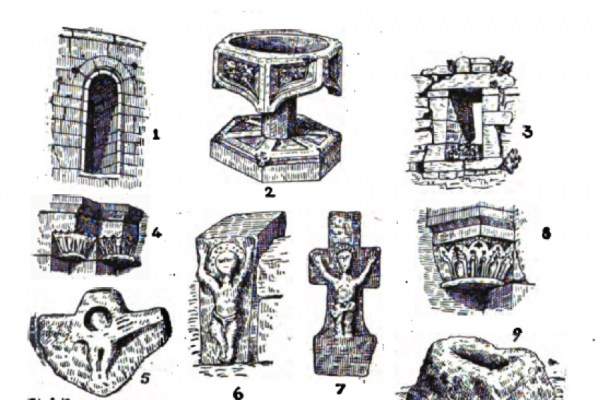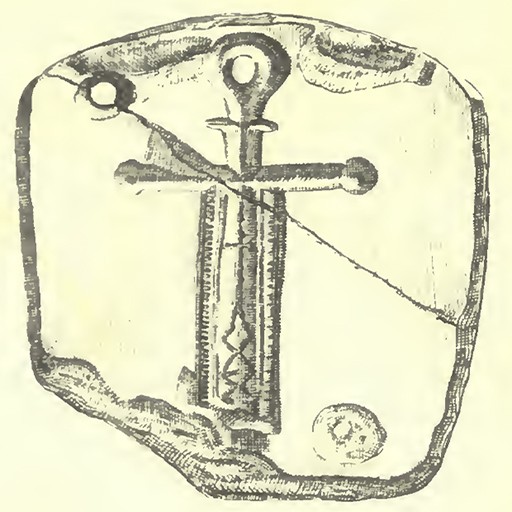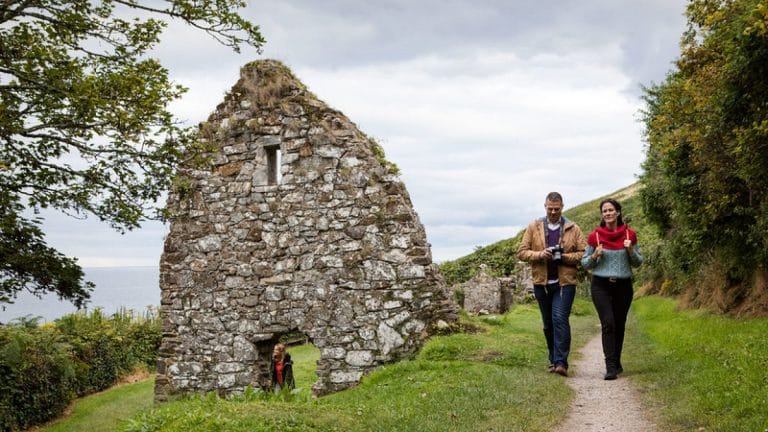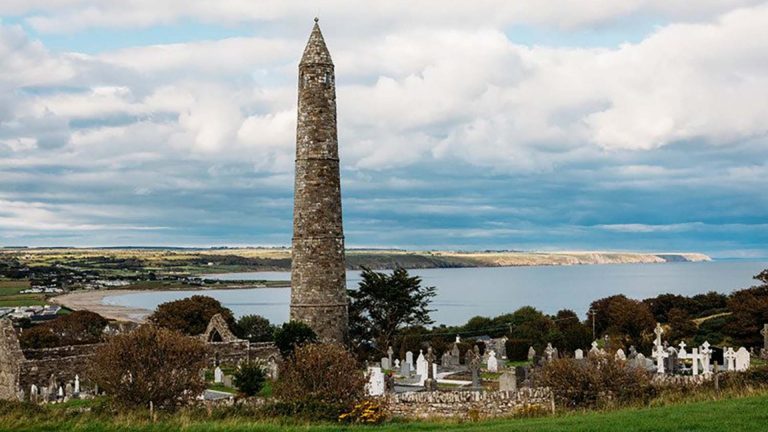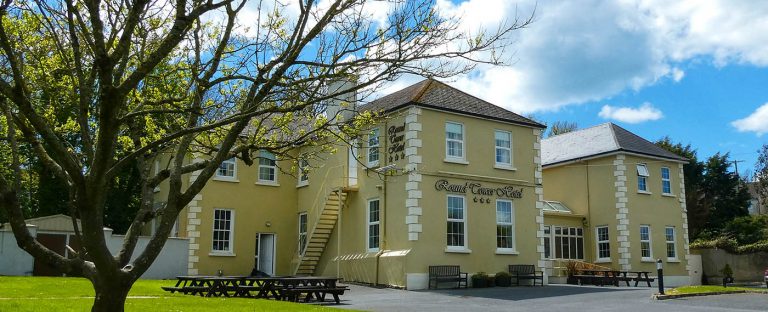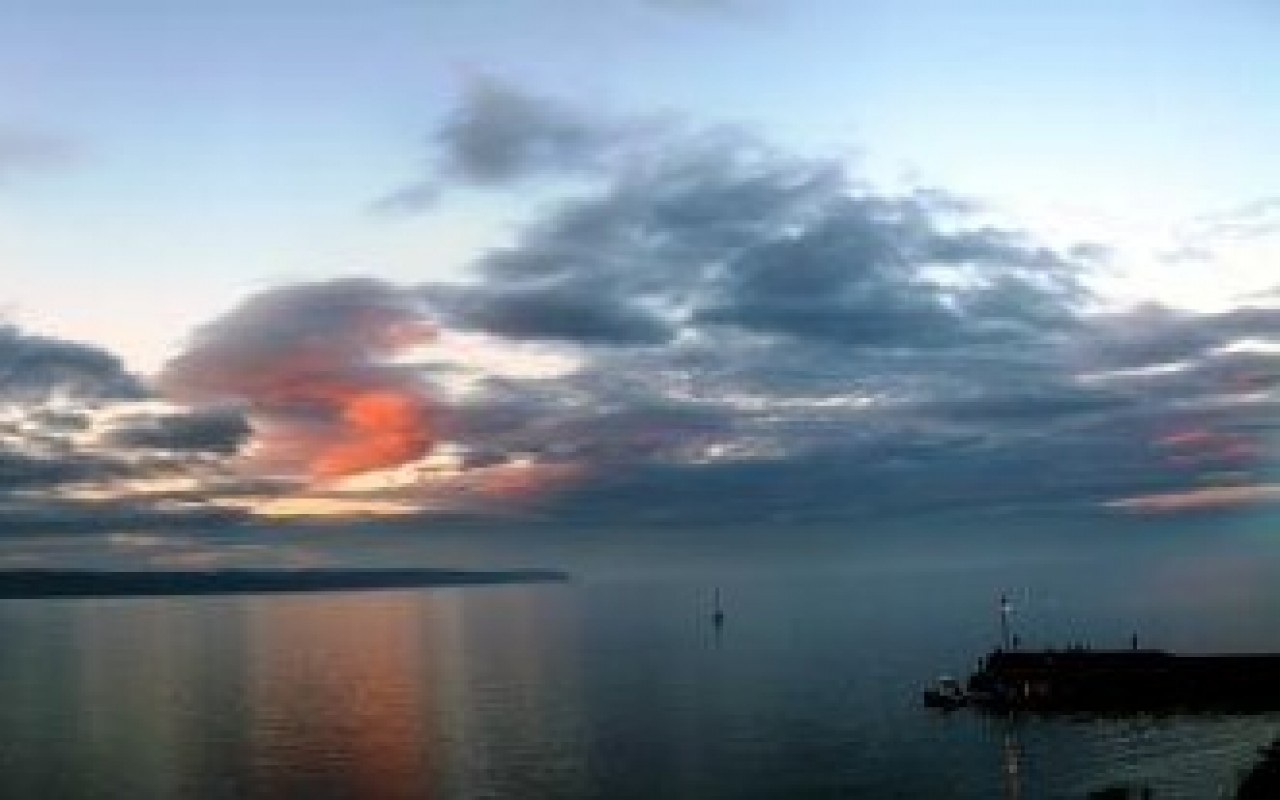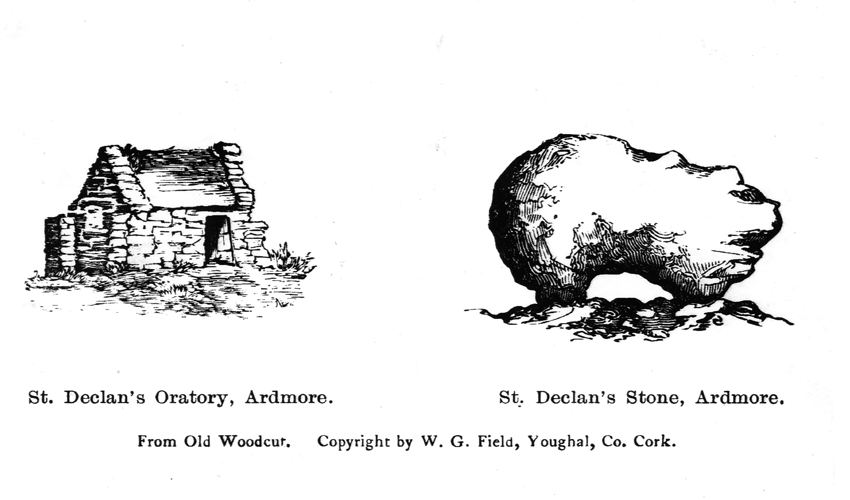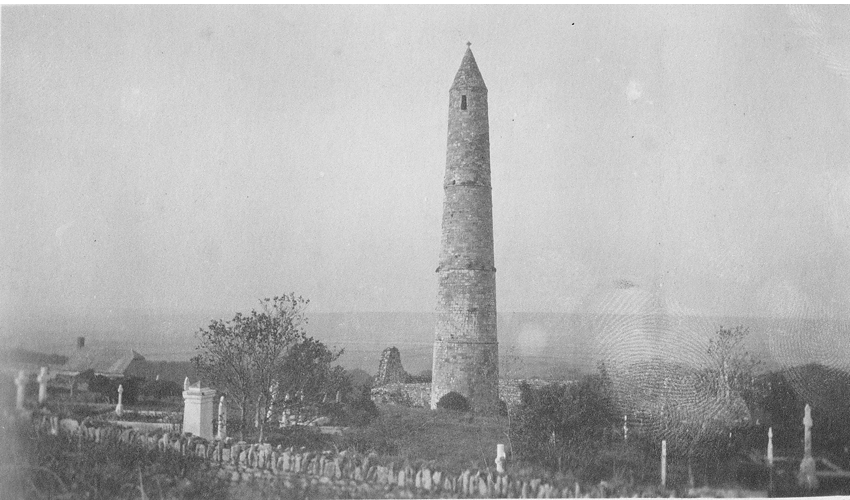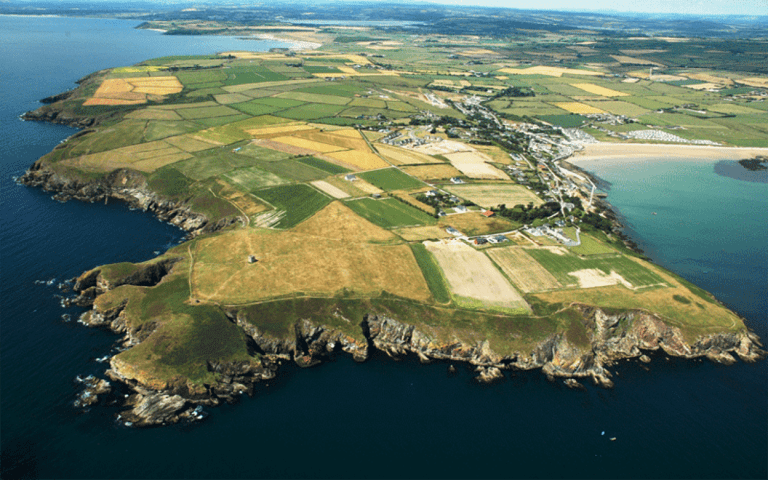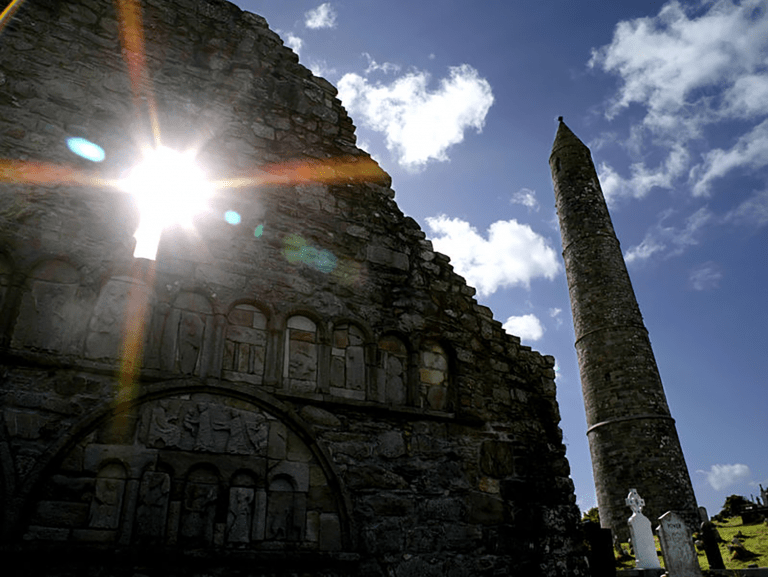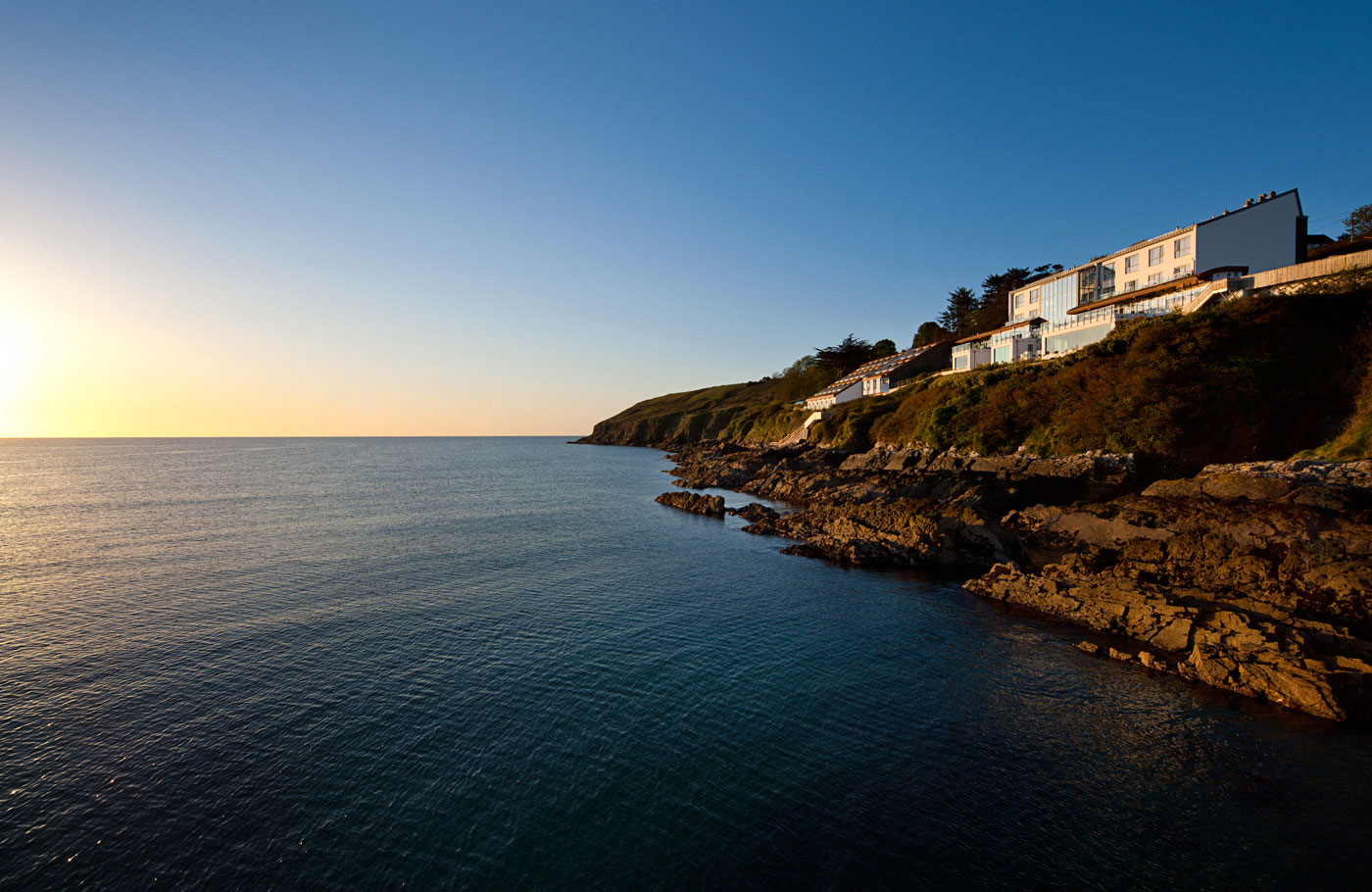Step back in time to the hallowed grounds of Ardmore, where a succession of devoted pastors has guided their flock through times of plenty and hardship for centuries. From the early 18th century to the dawn of the 20th, these men of faith left an indelible mark on the spiritual landscape of this historic parish.
The Early Pioneers
Our journey begins in 1704 with Rev. Richard Power, a man of 56 who brought the wisdom of his Spanish education to the shores of Ardmore. Imagine the tales he could tell of his travels and the challenges of ministering in penal times.
Fast forward to 1765, and we find Rev. Philip O’Hahassey at the helm, a name that echoes the Gaelic roots of the community he served.
The Builders of Faith
As the 19th century dawned, a series of pastors would leave their mark in stone and spirit:
- Rev. Walter Moloney, the farmhouse priest of Ballyeelinan
- Rev. Pierce Walsh, whose journey took him from Ardmore to Ardfinnan
- Rev. Michael Tobin, the church-builder of Cahir
- Rev. Patrick McGrath, the tireless architect of Ardmore’s religious landscape, erecting churches that still stand today
The Famine’s Faithful Shepherd
In the darkest days of the Great Hunger, Rev. Garrett Prendergast emerged as a beacon of hope. Picture this man of God, distributing food to 200 hungry souls every Sunday, a living embodiment of compassion in Ireland’s bleakest hour.
The Visionaries and the Builders
The latter half of the 19th century saw pastors who not only tended to souls but also to the physical needs of their parish:
- Rev. Patrick Wall, who furnished the bare churches and built schools
- Rev. John Shanahan, the educator who raised Ardmore’s National Schools
- Rev. John Walsh, the Irish preacher whose words still echo in local memory
The Turn of the Century
As the 20th century approached, Ardmore saw:
- Rev. Patrick Walsh, a native son returned to lead his people
- Rev. John Casey, the builder of the parochial residence
- Rev. John O’Donnell, ushering the parish into a new era
Each of these men, from Power to O’Donnell, wove their own thread into the rich tapestry of Ardmore’s history. Their legacies live on in the churches they built, the schools they founded, and the faith they nurtured.
As you walk the streets of Ardmore today, pause to remember these shepherds of the soul. Their stories are etched in the very stones of the buildings they left behind, a testament to the enduring spirit of this ancient parish by the sea.
Citations:
[1] https://www.ardmorewaterford.com/the-parish-of-ardmore-and-grange-1912/
Explore The Succession Of Pastors In Ardmore Up To 1912
Heritage is as much about people as it is about the built environment.
And, no history of Ardmore would be complete without exploring the pastors and priests that helped shape this village’s religious and cultural life.
We include an extract from The Parochial History of Waterford and Lismore, written in 1912, which outlines some interesting facts about the Parish of Ardmore and Grange.
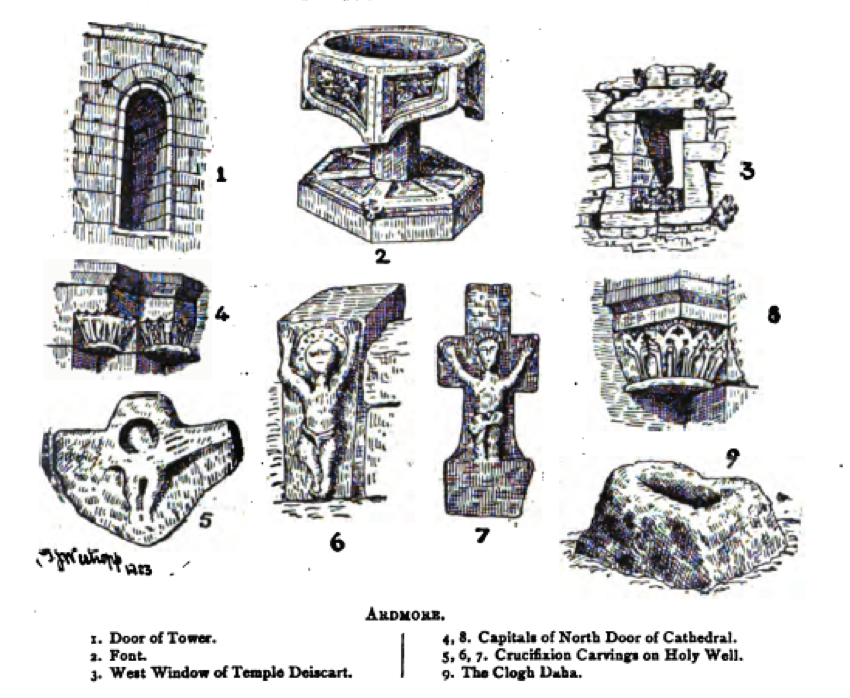 Ecclesiastically the district embraced within this parish is one of the most historic localities in Ireland. Here, according to many authorities, St. Declan established himself as bishop some years previous to the advent of St. Patrick. The question of St. Declan’s exact period is one of the great unsettled problems of early Irish church history, into which it is not our business now to enter. Most probably it will be found, when the materials have been more critically examined and their evidence sifted, that Declan’s mission was more or less independent of Patrick’s and of Welsh origin or inspiration. Whether Declan was really predecessor, cotemporary, or successor of the National Apostle his period was undoubtedly very early. His Irish “Life” preserved in a MS. of Michael O’ Clery’s in the Royal Library, Brussels, attributes to Declan the conversion of South Decies. On the other hand, there is no evidence that St. Patrick ever entered the latter territory. The annals throw but little light on the succession of Bishops at Ardmore. Ultan is commonly stated to have succeeded Declan. One Eugene was Bishop of Ardmore in 1174, under which date his name is found as subscribing witness to a charter granted to the Abbey of Cork. Finally, Moelettrim O Duibhe-Rathra, Bishop of Ardmore, is recorded in the Annals of Inisfallen to have died in 1203. It is to this Bishop Moelettrim that we owe the erection or restoration of the cathedral now in ruins and most probably the ruined church known as Disert-Declain. St. Declan’s Oratory in the graveyard certainly antedates by centuries the two buildings referred to, and even the Round Tower, though one of the very latest specimens of its class, is probably a century or two older than the cathedral. The Feast of St. Declan is still celebrated with much solemnity at Ardmore on July 14th. At the request of Most Rev. Dr. Sheehan and at the instigation of a late Parish Priest, Rev. John Walsh, the Holy See has attached a Plenary Indulgence on the usual conditions to church and feast. There is an immense influx of pilgrims on the Feast Day and on the Sunday nearest to the 14th. In 1847 it is estimated the number present was fourteen thousand, and in 1894 it had fallen to five thousand.
Ecclesiastically the district embraced within this parish is one of the most historic localities in Ireland. Here, according to many authorities, St. Declan established himself as bishop some years previous to the advent of St. Patrick. The question of St. Declan’s exact period is one of the great unsettled problems of early Irish church history, into which it is not our business now to enter. Most probably it will be found, when the materials have been more critically examined and their evidence sifted, that Declan’s mission was more or less independent of Patrick’s and of Welsh origin or inspiration. Whether Declan was really predecessor, cotemporary, or successor of the National Apostle his period was undoubtedly very early. His Irish “Life” preserved in a MS. of Michael O’ Clery’s in the Royal Library, Brussels, attributes to Declan the conversion of South Decies. On the other hand, there is no evidence that St. Patrick ever entered the latter territory. The annals throw but little light on the succession of Bishops at Ardmore. Ultan is commonly stated to have succeeded Declan. One Eugene was Bishop of Ardmore in 1174, under which date his name is found as subscribing witness to a charter granted to the Abbey of Cork. Finally, Moelettrim O Duibhe-Rathra, Bishop of Ardmore, is recorded in the Annals of Inisfallen to have died in 1203. It is to this Bishop Moelettrim that we owe the erection or restoration of the cathedral now in ruins and most probably the ruined church known as Disert-Declain. St. Declan’s Oratory in the graveyard certainly antedates by centuries the two buildings referred to, and even the Round Tower, though one of the very latest specimens of its class, is probably a century or two older than the cathedral. The Feast of St. Declan is still celebrated with much solemnity at Ardmore on July 14th. At the request of Most Rev. Dr. Sheehan and at the instigation of a late Parish Priest, Rev. John Walsh, the Holy See has attached a Plenary Indulgence on the usual conditions to church and feast. There is an immense influx of pilgrims on the Feast Day and on the Sunday nearest to the 14th. In 1847 it is estimated the number present was fourteen thousand, and in 1894 it had fallen to five thousand.
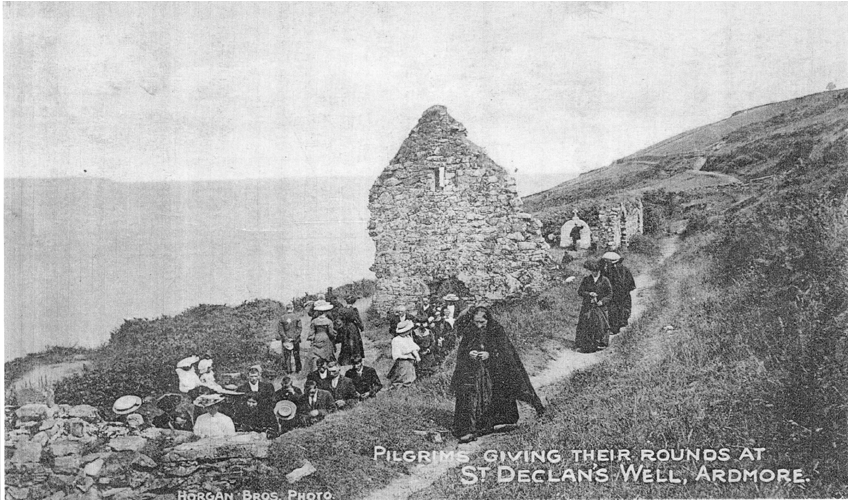
The present churches of the parish were erected by Rev. Patrick McGrath during his pastorate, scil. : Ardmore in 1837 and Grange in 1837. Both buildings are of the plain, spacious, and substantial type, characteristic of country churches of the second quarter of the last century. The builder of both churches was Mr. Mullany of Cahir.
The dimensions of the Ardmore Church are—length 88 ft., width 31 i/2 ft., and the corresponding dimensions of the church of Grange are 97 by 32 ft. In the latter church is a marble altar consecrated on September 7th, 1890, by Most Rev. Dr. Egan.
Up to the year 1847, Ballymacart or Old Parish was united with
Ardmore and Grange, but in the year named a re-arrangement was effected, Old Parish being cut off and attached to Ring. Before the division, the population of the parish was eight thousand. At present it is about two thousand; in 1892 it stood at two thousand two hundred and twenty.
SUCCESSION OF PASTORS
Rev. Richard Power, residing at Russinns (Rusheens), was registered Parish Priest of “Ardmore, Lisguenane, and Kinsalebegg” in 1704.
He was then aged 56 years and had been ordained in Spain. Rev.
Philip O’ Hahassey was (on the authority of an Irish MS.) Parish Priest in 1765.
The next pastor of whom we have account is Rev. Walter Moloney, who was Parish Priest of Ardmore and Grange towards the close of the 18th century. He resided at a farmhouse in Ballyeelinan.
In succession to Father Moloney came Rev. Pierce Walsh who was translated in 1816 to Ardfmnan and Grange (see under Ardfinnan Parish). His immediate successor was Rev. Michael Tobin; he too was translated (in 1836) to Cahir, where he built the spacious church which is still in use.
Rev. Patrick McGrath succeeded in 1836. During his pastorate were erected the churches of Ardmore, Grange, and Old Parish as we have already seen. He was a man of unassuming piety and wonderful energy and was esteemed and loved by his people. Like his two immediate predecessors, he was translated to another pastorate—Ballylooby. This transfer took place at the close of 1846 and during the vacancy Old Parish was cut off as above described. Rev. Garrett Prendergast, whose practical sympathy with the poor famine-stricken people is still a living memory, was appointed Parish Priest in the miserable year 1847. During the “bad times” he distributed food on Sundays to two hundred persons. He was spared only ten years—dying in 1857, and lies buried in Ardmore Church where his tombstone bears the following inscription:
“Rev. Garret Prendergast, P.P., Ardmore and Grange; died January 2nd, 1857.”
The Rev. Patrick Wall was appointed Parish Priest of Ardmore and Grange in the year 1857. He governed the parish with great prudence and energy for eighteen years and built a National School, which was afterward swept away by the encroaching sea. He also furnished the churches of Ardmore and Grange, which were mere shells at his appointment; on account of the great poverty of the people, nothing could be done to furnish them by his predecessor, Father Prendergast.
Father Wall died in 1875 and was buried in the church of Ardmore, and to his memory, the people erected by subscription a side altar of marble dedicated to the Sacred Heart of Jesus. A slab inserted beside the memorial altar is inscribed: “Pray for the soul of Rev. Patrick Wall, P.P., to whose memory this altar was erected by the parishioners of Ardmore and Grange.”
The Rev. John Shanahan succeeded to the pastorship in 1875 and during his time, he built the present National Schools of Ardmore. After successful administration of the parish for nine years he died, possessed of only two or three shillings, on the 11th March 1884, and was buried in Ardmore Church. His monument, within the church at Ardmore, is inscribed:
“Pray for the soul of the Rev. John Shanahan, P.P. of Ardmore and Grange; died 11th March 1884, aged 68 years.”
Rev. John Walsh was appointed Parish Priest in March 1884, and took up his residence at Ballyquin House. He was an effective Irish preacher and his homely but withal forceful exhortations will be long remembered in Ardmore and Grange. Father Walsh was killed by a fall from his horse while returning from attendance at a sick call, in 1901.
Rev. Patrick Walsh, a native of the parish, next succeeded, being translated from Abbeyside. He administered the affairs of the parish with prudence and zeal for five years and died in 1906. His end came unexpectedly like his predecessor’s; he was found dead on the floor of his sitting room and had been seen in perfect health an hour or two previously.
Rev. John Casey was appointed to the pastorate on the death of Father Walsh and resigned four years later to accept the pastoral charge of Passage and Killea. During Father Casey’s brief term he erected a fine parochial residence. He had as curate Rev. John O’Shea who, on a winter’s day in 1911, performed an act of heroism which attracted widespread notice and was especially honoured by the King. A ship was driven into Ardmore Bay by the gale and when it had struck, while the waves were breaking over it, Father O’Shea got together a crew, launched a boat and at imminent peril boarded the ship only to find that all aboard had perished save a single seaman who too succumbed before the gallant rescuers were able to get him ashore.
Father Casey was succeeded in 1911, by Rev. John O’Donnell.
ECCLESIASTICAL ANTIQUITIES
The antiquities of the parish are of surpassing interest; some of them have been already alluded to. At Ardmore, itself are the ruins of three churches, a perfect round tower, a famous holy well, some ogham inscriptions, a boulder popularly called St. Declan’s Stone, and another stone that seems to have been the pedestal of a Celtic cross. Of the three churches, the most important is the Cathedral, consisting of a Romanesque nave and a Celtic cyclopean choir joined by a transitional chancel arch. The external face of the west gable is broken up into a series of arcades and panels, filled with sculptured figures of the style familiar to students of the Celtic crosses. The second church, sometimes called St. Declan’s grave, to the east of the cathedral is really a primitive oratory, the only example of that class of building surviving in the Diocese. On the edge of the cliff, half a mile from the cathedral and tower is the third church. This was erected, probably by Bishop Moelettrim already alluded to, on the site of a little cell built here for himself by the great founder of Ardmore in his last years. In this cell which, says the Saint’s “Life,” he loved very much St. Declan breathed his last, consoled by the ministrations of his disciple Moliach or Liach. “St. Declan’s Stone,” lying on the beach a few perches to the east of the village, is a rough boulder of conglomerate resting on two slight projections of rock. Wonderful virtues are attributed thereto and on the Saint’s feast day hosts of pilgrims from far and near the resort to it. In the 12th century, “Life” thus chronicles Declan’s connexion with the stone: as the Saint was on his way homewards from Rome he paid a somewhat lengthened visit to his friend, St. David, in the latter’s city of Menevia. When the visitor was about to embark for Erin one of his miuntir, Luan, by name, handed the Saint’s bell to a brother monk with the intention that the latter should see it safely onboard the ship. In the hurry of embarkation, however, the monk forgot the bell which he had temporarily placed on a rock by the shore. It was not till half the voyage across the Irish Sea had been completed that the bell was remembered. Declan was exceedingly grieved and troubled at the loss. He had recourse to prayer and soon the stone supporting the precious bell was seen floating towards them on the waves. Thereupon the Saint directed his companions to steer in the wake of the floating rock, for wherever he declared, the boulder should come to land where he should build his city and there should be the place of his resurrection.
The boulder, which is the subject of the foregoing legend, is to be distinguished from another stone of St. Declan—the “ for which curative powers were also claimed and a heavenly origin. The latter object was of small size—only a few inches square—and was last heard of, some fifty years ago, in Dungarvan. Its subsequent fate I have been unable to trace. On the grounds of Monea House, Ardmore is a dressed block of limestone, known as
for which curative powers were also claimed and a heavenly origin. The latter object was of small size—only a few inches square—and was last heard of, some fifty years ago, in Dungarvan. Its subsequent fate I have been unable to trace. On the grounds of Monea House, Ardmore is a dressed block of limestone, known as  , in which Marcus Keane and other fanciful people see an object once connected with Phallic or other pagan worship. This is apparently the plinth of an ancient cross and the mortise for the reception of the shaft came, in a later and less reverent age, to be used as a dye bath —hence the modern name. Allusion to the cross suggests the observation that in the parish are places called, respectively, Crossford (in Irish)
, in which Marcus Keane and other fanciful people see an object once connected with Phallic or other pagan worship. This is apparently the plinth of an ancient cross and the mortise for the reception of the shaft came, in a later and less reverent age, to be used as a dye bath —hence the modern name. Allusion to the cross suggests the observation that in the parish are places called, respectively, Crossford (in Irish)![]() and
and

(Aodh’s Cross)—so named, presumably, from Termon crosses marking the limits of St. Declan’s sanctuary lands. On the townland of the same name stand the rather insignificant remains of the ancient church of Grange, called also Lisginan. The remains in question consist of a portion of the north and south side walls and a moiety of gable of a plain early English church. In the graveyard attached are a stunted ogham-inscribed pillar stone and two diminutive headstones curiously inscribed with a series of peculiar geometric figures of similar character to those alluded to under Aglish. Other ecclesiastical antiquities of the parish are a holy well
on the townland of Ballylane, and primitive church sites at Grallagh and Kilnockan respectively.
